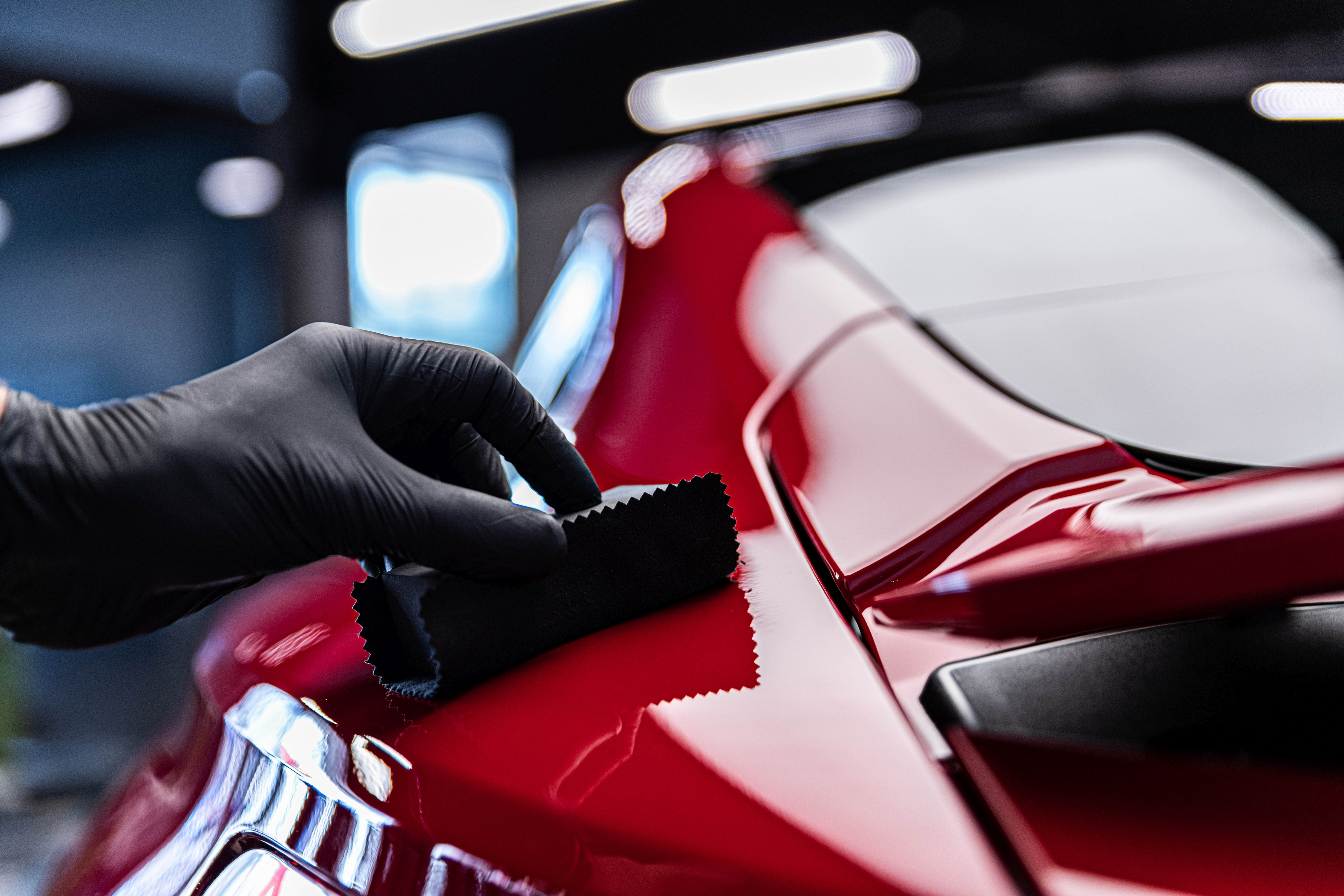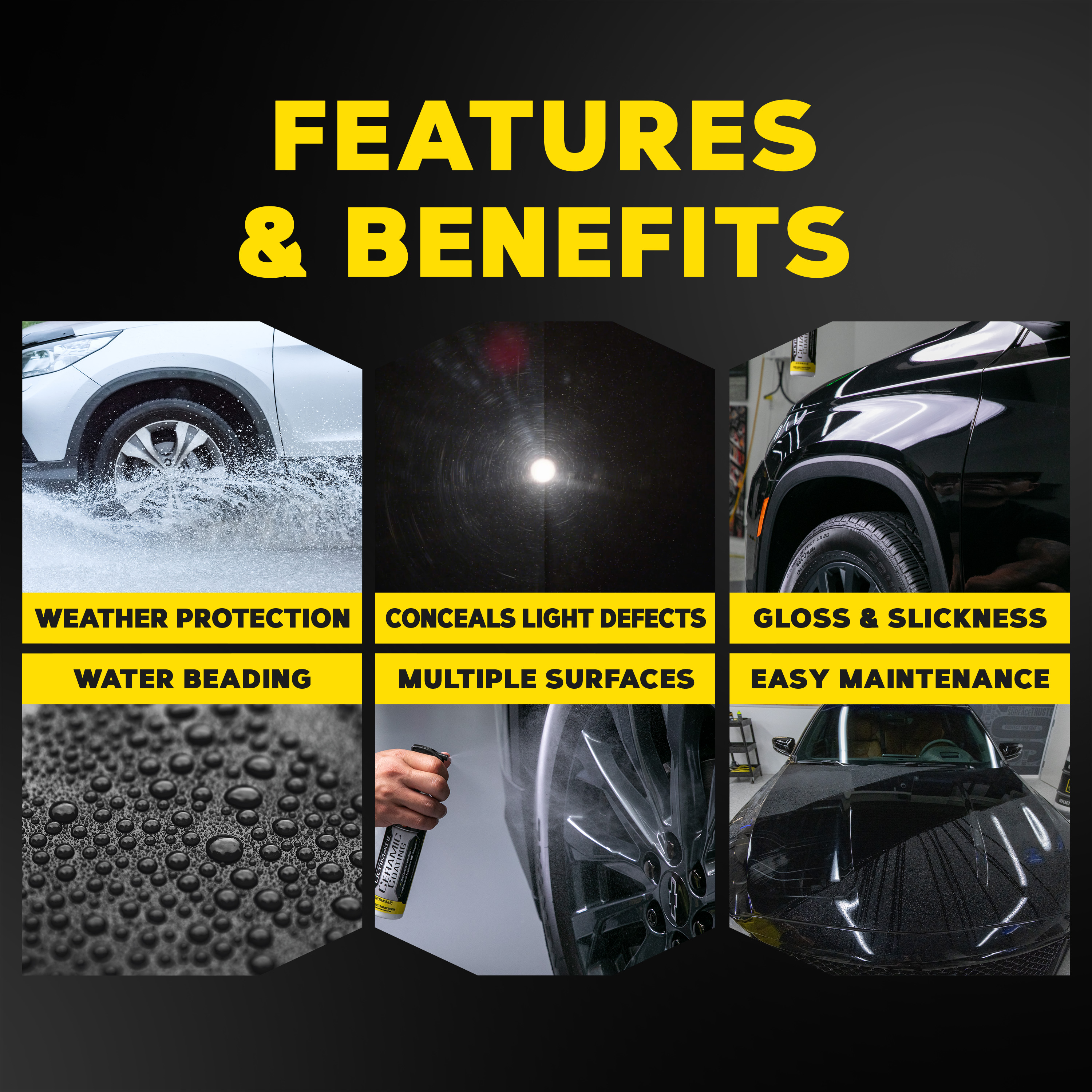Why Ceramic Finish Is the Ultimate Option for a Remarkable End Up
Ceramic coating has emerged as a leading remedy for those looking for a remarkable finish for their automobiles, thanks to its remarkable durability and protective functions. This advanced liquid polymer not just bonds perfectly with manufacturing facility paint however likewise uses a formidable barrier versus usual risks such as scrapes, UV rays, and toxic wastes. Its hydrophobic buildings simplify upkeep while enhancing visual charm. However, comprehending just how this innovation compares to standard methods and exploring its application subtleties can disclose much more concerning its worth. What variables truly established ceramic finish apart?
What Is Ceramic Covering?

When used properly, ceramic finish produces a hydrophobic surface that repels water and dirt, making it less complicated to keep and clean. Unlike traditional waxes or sealants, which generally use short-term security, ceramic coatings can last for several years, depending on the product quality and application approach. The process of applying ceramic coating calls for meticulous prep work, consisting of complete cleaning and sometimes repaint improvement, to guarantee optimum bonding and efficiency.
Ceramic finishes are not restricted to vehicle surface areas; they can additionally be utilized on various materials, consisting of glass, steel, and plastics, giving a functional remedy for enhancing defense. Generally, ceramic finishing represents a significant advancement in surface area defense technology, combining both visual and functional benefits for a vast array of applications.
Benefits of Ceramic Covering
While several surface area security alternatives exist, the advantages of ceramic coating stick out as a result of its unique residential or commercial properties and durable performance. One of the primary advantages is its phenomenal resilience. Ceramic Coating Philadelphia. Unlike traditional wax or sealers that need regular reapplication, ceramic finishes provide a durable layer that can last for several years, substantially reducing maintenance initiatives
Another significant benefit is enhanced defense against ecological contaminants. Ceramic finishes produce a hydrophobic surface that wards off water, dirt, and numerous contaminants, making it less complicated to clean up. This feature not just protects the automobile's look however likewise decreases the threat of deterioration and oxidation, especially in extreme climate condition.
Furthermore, ceramic coatings offer superior resistance to UV rays, avoiding fading and deterioration of paint over time. This UV defense is essential for maintaining the visual value of vehicles and surface areas exposed to guide sunlight.
Furthermore, the shiny coating attained with ceramic covering boosts the overall aesthetic appeal, offering surface areas a showroom-quality sparkle. In general, ceramic layers represent a significant advancement in surface defense technology, offering long-lasting advantages that satisfy both aesthetic and functional requirements.
How It Functions
Recognizing the science behind ceramic finishes discloses just how they offer such exceptional defense and longevity. At its core, a ceramic layer is a fluid polymer that chemically bonds with the vehicle's factory paint.
The application procedure includes numerous actions, consisting of surface area prep work, which is vital to achieving optimal attachment. Once used, the coating undergoes a healing process, moved here during which it sets and develops a semi-permanent bond with the paint surface. This bond is what differentiates ceramic finishes from conventional waxes and sealants, giving a longer-lasting protective barrier that can sustain for many years.
Furthermore, the thickness of the coating can boost its safety qualities, making certain that it can hold up against rough conditions. Ultimately, the scientific research of ceramic coverings integrates advanced materials with innovative application techniques to provide an unparalleled degree of security and aesthetic enhancement for lorries.
Contrast With Traditional Methods
When contrasted to conventional paint defense techniques such as waxes and sealants,The benefits of ceramic coatings come to be especially evident. While waxes use a temporary sparkle, typically lasting a few weeks to a number of months, ceramic coatings give a lasting safety layer that can sustain for numerous years. This resilience considerably minimizes the frequency of reapplication, making ceramic coatings a more affordable option with time.
Furthermore, traditional methods usually need comprehensive prep work and several applications to accomplish an acceptable degree of defense. On the other hand, ceramic layers bond at a molecular degree with the automobile's surface area, producing a durable guard versus ecological pollutants like UV rays, acid rain, and roadway salts. This bond boosts the lorry's resistance to scratches and swirl marks, which prevail with typical waxes and sealants.
In addition, the hydrophobic buildings of ceramic coatings ward off water and dirt, leading to less complicated cleansing and upkeep. In comparison, wax and sealant-treated surface areas can draw in grime, demanding even more constant washing - Ceramic Coating Philadelphia. In general, ceramic layers not only provide premium protection however additionally supply a more enduring and visually enticing finish, developing them as the recommended selection for critical car proprietors
Application and Upkeep Tips

Making use of a foam applicator, apply the coating in little areas, following the producer's standards pertaining to density and overlap. Enable sufficient healing try this time in between layers, normally 24-hour, to ensure proper bonding. After application, it is crucial to stay clear of exposure to water or severe aspects for at the very least a week to allow the finish to fully treat.
Additionally, making use of a ceramic upkeep spray can improve the coating's hydrophobic buildings and durability. Routine assessments for any kind of indications of wear will certainly help preserve the covering's stability and maintain that excellent finish.
Verdict
Finally, ceramic layer becomes a remarkable option for attaining a remarkable automotive coating. Its outstanding sturdiness, safety qualities, and hydrophobic residential or commercial properties dramatically improve the automobile's appearance while streamlining maintenance efforts. By developing a durable bond with manufacturing facility paint, ceramic layer effectively shields against scrapes, UV rays, and environmental pollutants. With a life-span expanding a number of years, this innovative remedy not just protects yet additionally boosts the general aesthetic appeal of automobiles, making it a cost-efficient financial investment for car fanatics.
